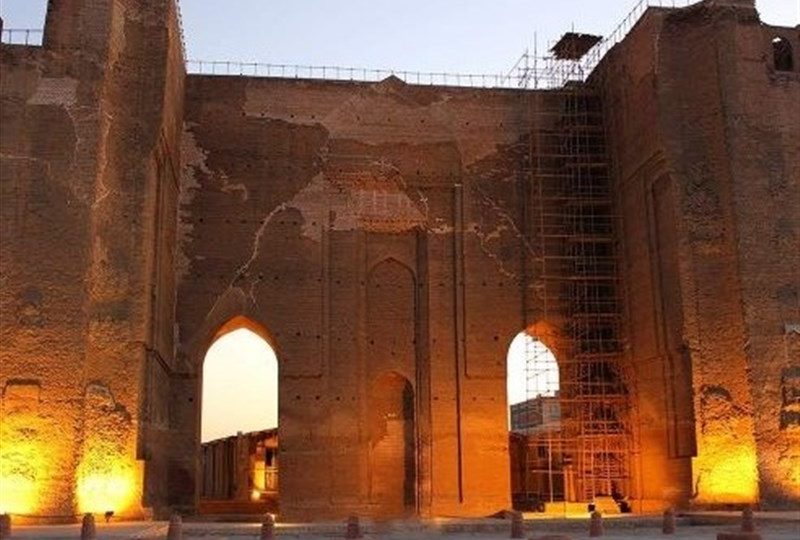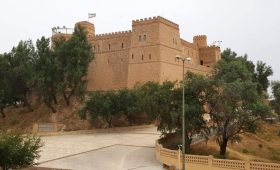Arg-e-Alishah is the name of a historical monument in Tabriz. The architectural style of this building is Azeri style and its architect is Tabrizi constellation.This Arg-e-Alishah is one of the tallest historical walls in the country and a symbol of the city of Tabriz. This Arg-e-Alishah is located in the center of Tabriz, on the south side of the intersection of Imam Khomeini and Ferdowsi streets, and today the space around it is used for Friday prayers, and the great prayer hall of Tabriz has been built in this place.
The Arg-e-Alishah of Tabriz was built by Khajeh Tajuddin Ali Shah. This building has been partially destroyed by earthquakes and the passage of time. In the Arg-e-Alishah, there were valuable historical monuments such as the “School of Salvation”, which was considered one of the first schools in Iran, and the “Lion and Sun Theater Hall”.
Today, only a part of the huge walls and the very high altar of the southern nave of this mosque are left, which confirms its glory and prosperity in the past. The existing walls, in fact, formed the arched porch and the arched portico of the huge cylinders, which created the space as the nave and the main element of Ali Shah Mosque. Existing remains of the building, a 30-meter-wide porch and 10-meter-thick side walls and rafters, and deep and voluminous foundations and foundations commensurate with the upper structures and the possible height of the building to the starting line of the 25-meter cylindrical arch. It seems to be correct.
Azeri style (Mongol style)
Azeri style is a style in post-Islamic Iranian architecture that is attributed to Azerbaijan. This method is also called Mongol or Iranian-Mongol style and became popular during the Ilkhanate rule over Iran. The Azeri style started from Maragheh and went to Tabriz and Soltanieh under the name of “Mongolian style” and then to all over Iran and abroad and became brighter day by day. At the height of the Azeri style, the architectural masterpieces of Timur’s successors, especially Shah Rukh, were built. Pirnia adapts the Azeri style to the architecture of the patriarchal and Timurid periods, but most scholars have considered the art and architecture of the Mongol (patriarchal) and Timurid periods to be two different periods.




